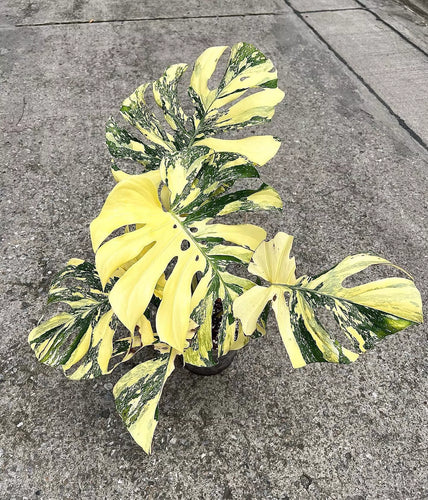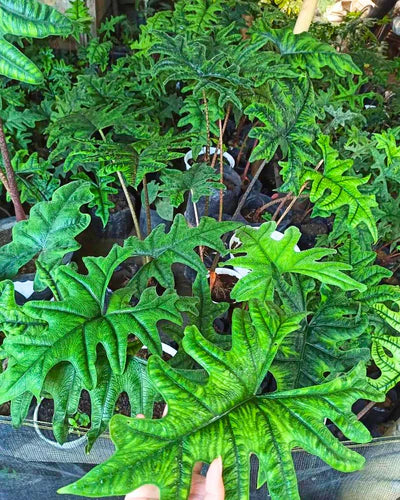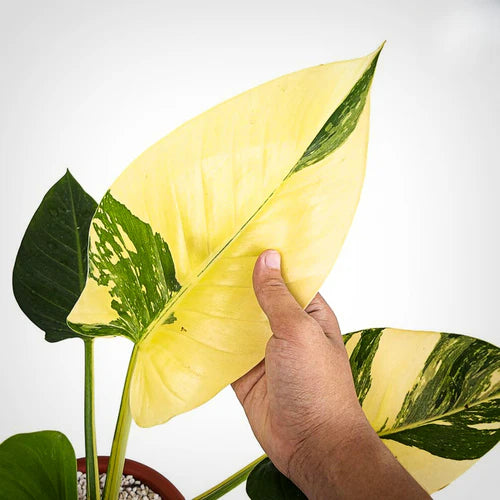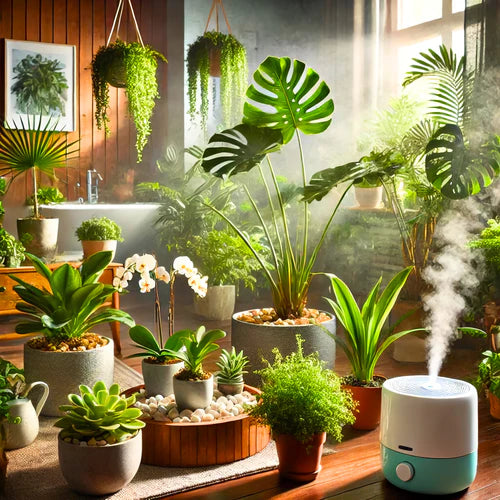How do you care for a Cebu Blue Plant?
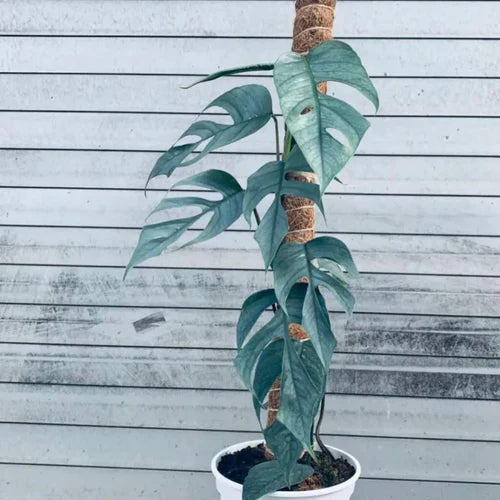
The Ultimate Guide to Caring for Your Cebu Blue Plant
Introduction
The Cebu Blue plant, scientifically known as Epipremnum pinnatum, is a tropical beauty that captivates plant enthusiasts with its striking blue-green leaves and minimal care requirements. Originating from the Philippines, this epiphytic plant has rapidly gained popularity for its exotic looks and adaptability. But how do you best care for a Cebu Blue Plant? This guide will break down all you need to know.
Table of Contents
-
Understanding the Cebu Blue Plant
- Characteristics
- Varieties
-
Optimal Growing Conditions
- Light Requirements
- Temperature and Humidity
-
Soil and Planting
- Choosing the Right Soil
- Repotting Tips
Understanding the Cebu Blue Pothos
Characteristics
Unlike its Pothos relatives, the Cebu Blue has a distinct color that sets it apart. The silver-blue tint of its leaves provides a unique aesthetic, making it a captivating focal point for any indoor or outdoor garden. Its vining nature allows it to be versatile in styling; you can hang it, let it climb, or even let it sprawl on a tabletop.
Varieties
While the Cebu Blue Pothos is captivating on its own, there are also other Epipremnum species worth exploring. You'll find that the Cebu Blue shares similar care tips with these other varieties, such as the Golden Pothos and Marble Queen Pothos.
Optimal Growing Conditions
Your Cebu Blue Plant thrives in specific environmental conditions that replicate its natural tropical habitat. So how can you create this ideal environment?
Light Requirements
The Cebu Blue plant is quite tolerant when it comes to light conditions. However, it does best in medium to bright indirect light. If you are unsure about your current light conditions, a light meter can be invaluable. A light meter allows you to measure the light intensity in your room, giving you more confidence in your plant placement.
Tips for Lighting:
- Avoid direct sunlight, as it can scorch the leaves.
- You can use grow lights to supplement natural light.
- Rotate the plant periodically for even growth.
Temperature and Humidity
Being a tropical plant, the Cebu Blue prefers warm and humid conditions. The ideal temperature range is between 60-80°F. If you're having trouble maintaining high humidity, consider investing in a humidifier. This device can be particularly helpful during winter months when indoor air tends to be drier.
Tips for Humidity:
- You can also place a humidity tray under your Cebu Blue plant.
- Make sure your plant is not near heating or cooling vents.
- Misting the leaves can also increase humidity but do it sparingly to avoid fungal issues.
Soil and Planting
The root system of a Cebu Blue plant is quite robust and does well in well-draining soil.
Choosing the Right Soil
For optimal growth, use a well-draining potting mix. An aroid mix is usually a great choice, but you can also add perlite or leca to improve drainage. Organic matter like worm castings or organic compost can also be mixed in to provide essential nutrients.
Repotting Tips
Repotting should be done at least once every 1-2 years. This is the time to refresh the soil and inspect the root system. Always use a container with drainage holes to prevent waterlogging.
Steps for Successful Repotting:
- Water your plant a day before repotting to make the process easier.
- Gently remove the plant from its current container.
- Prune any dead or rotting roots.
- Place the plant in the new pot and fill with fresh soil.
- Water lightly to help the soil settle.
Watering Essentials for Cebu Blue
The Importance of Proper Watering
While Cebu Blue plants are relatively forgiving, water is one component that can make or break its health. Overwatering and underwatering are both detrimental to the plant's well-being. To maintain a happy medium, use a moisture meter. This tool will help you understand when your plant needs water, taking the guesswork out of the equation.
Watering Tips:
- Water the plant when the top 1-2 inches of soil are dry.
- Use distilled or filtered water to prevent mineral buildup.
- Always empty the saucer under the pot after watering to avoid root rot.
Watering Frequency
Typically, the Cebu Blue plant will need watering every 1-2 weeks. However, the frequency will depend on various factors, including light, temperature, and humidity. During hot and dry months, your Cebu Blue might require more frequent watering.
Fertilizing Your Cebu Blue
When and How to Fertilize
Nutrients are essential for the Cebu Blue plant to flourish. To enhance its growth and vitality, consider using a slow-release fertilizer during the growing season (spring and summer). This type of fertilizer will provide a continuous supply of nutrients over several months.
Fertilizing Tips:
- Always follow the manufacturer's instructions.
- Do not fertilize during the dormant winter months.
- Flush the soil every few months to remove salt and mineral buildup.
Pest Management
Common Pests and Solutions
No plant is immune to pests, and the Cebu Blue is no exception. The most common pests that attack these plants are spider mites, aphids, and mealybugs. These pests can be effectively dealt with using neem oil or insecticidal soap. For severe infestations, Bonide Systemic Houseplant Insect Control could be your last resort.
Pest Control Tips:
- Inspect new plants for pests before introducing them to your home.
- Quarantine affected plants to prevent the spread of pests.
- Regularly wipe down leaves to remove dust and inspect for pests.
Pruning and Propagation
Why Prune Your Cebu Blue Pothos?
Pruning isn't just about aesthetics; it can also promote healthier growth. Trimming back leggy vines or removing dead leaves can improve air circulation and encourage new growth.
Propagation Techniques
Cebu Blue Pothos is relatively easy to propagate. Simply cut a 4-6 inch segment just below a node and place it in water or directly into soil. If you choose water propagation, transplant the cutting into soil once roots have developed.
Tips for Propagation:
- Use a sharp, clean knife or pruning scissors for cutting.
- If rooting in water, change the water every few days to prevent rot.
Understanding Cebu Blue's Unique Characteristics
A Brief Overview of its Taxonomy
The Cebu Blue plant is a variety of Epipremnum pinnatum and has been a hot topic among plant enthusiasts due to its distinct, velvety blue-green leaves. Many don't know that you can attach this plant to a moss pole and have it start to fenestrate.
Benefits of Having a Cebu Blue
Besides their aesthetic appeal, Cebu Blue plants are also known for their air-purifying qualities. They can absorb and eliminate harmful substances like benzene and formaldehyde, thereby improving indoor air quality.
Common Issues and Their Solutions
Leaf Yellowing
One of the common problems you might face is yellowing leaves. This is often due to overwatering. Make sure to check the soil's moisture level with a moisture meter before watering.
Root Rot
If you notice a foul smell and see that the leaves are turning mushy, you might be dealing with root rot. To counter this, consider repotting the plant in fresh, chunky soil mix and inspect the roots carefully, removing any that are rotten, potentially move into a pot with more drainage holes or water less frequently.
FAQ: All You Need to Know About Cebu Blue
1. Is Cebu Blue Pothos Rare?
While the Cebu Blue Pothos has gained a reputation for its unique color and leaf structure, it is not as rare as some other exotic plants. However, it may not be readily available at every local nursery, lending it an air of exclusivity among plant enthusiasts.
2. What is so Special About Cebu Blue Pothos?
The standout feature of Cebu Blue Pothos is its captivating bluish-green foliage, lending it a mesmerizing appearance. Additionally, its adaptability to various growing conditions and resistance to pests makes it a special addition to any plant collection. Its leaves can also develop fenestrations (natural holes), adding another layer of aesthetic intrigue.
3. Is Cebu Blue Pothos Hanging or Climbing?
Cebu Blue Pothos is versatile in its growth habits and can be both a hanging and climbing plant. When placed in a hanging pot, its vines will drape down elegantly. However, if provided with a support like a moss pole or trellis, it has the ability to climb, showcasing its beauty in a different form.
4. How Do You Care for a Cebu Blue Plant?
Caring for a Cebu Blue Pothos is relatively straightforward. It prefers bright, indirect light but can tolerate lower light conditions. The soil should be well-draining, and you can make use of a moisture meter to avoid overwatering. Monthly fertilization with a balanced, slow-release fertilizer is usually sufficient for robust growth.
5. Why are Cebu Blue plants so expensive?
The rarity of the plant, coupled with its striking appearance, makes it a sought-after commodity in the plant market. High demand and limited supply drive up the price.


